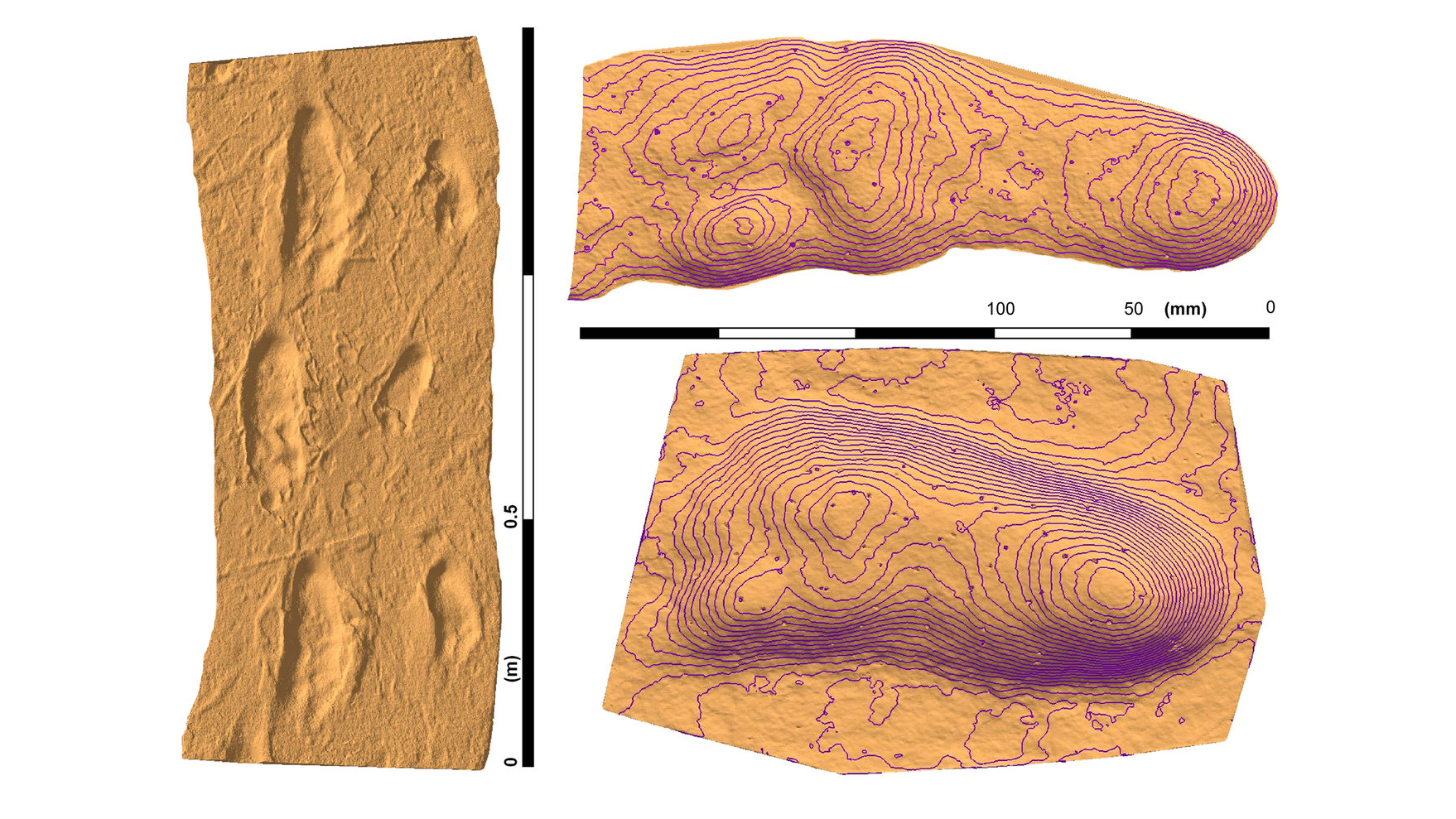Why the world's oldest human footprints are getting crime scene analysis
An impressive feet

About 3.6 million years ago, two ancient proto-humans walked across a field covered in wet volcanic ash in what is now Tanzania, leaving a trail of footprints behind them. We know little about these early hominins, except that they were bipedal and that their feet were more humanlike than apelike.
Their footprints, preserved in the ash, were rediscovered in the late 1970s by a team led by archaeologist Mary Leakey. She found that one set of the tracks had been obscured when a third person followed the same path at some later point, so almost all the analysis of the tracks to date has been done on the undisturbed tracks.
Now, however, researchers from Bournemouth University have used modern forensic footprint analysis techniques to decouple the tracks on the merged trail, revealing information about the body mass, height and walking speed of the creatures that made them.
Their data also hints towards a fourth set of tracks at the same site.
The software combines multiple forensic functions into one package. It allows law enforcement to match prints of feet and shoes found at a crime scene. It can also be used for animal prints, and is under continuous development at the university.
Doubled Information
"[The footprints] provide a fascinating insight into how early humans walked," explains Matthew Bennett, who co-authored a paper on the discovery in the journal Scientific Reports. "The techniques we have been developing for use at modern crime scenes can also reveal something new about these ancient track sites."
"This information is incredible for us," added Sally Reynolds, who also contributed to the study. "It means that we have effectively doubled the information that the palaeo-anthropological community has available for study of these hominin track-makers."
Get daily insight, inspiration and deals in your inbox
Sign up for breaking news, reviews, opinion, top tech deals, and more.
